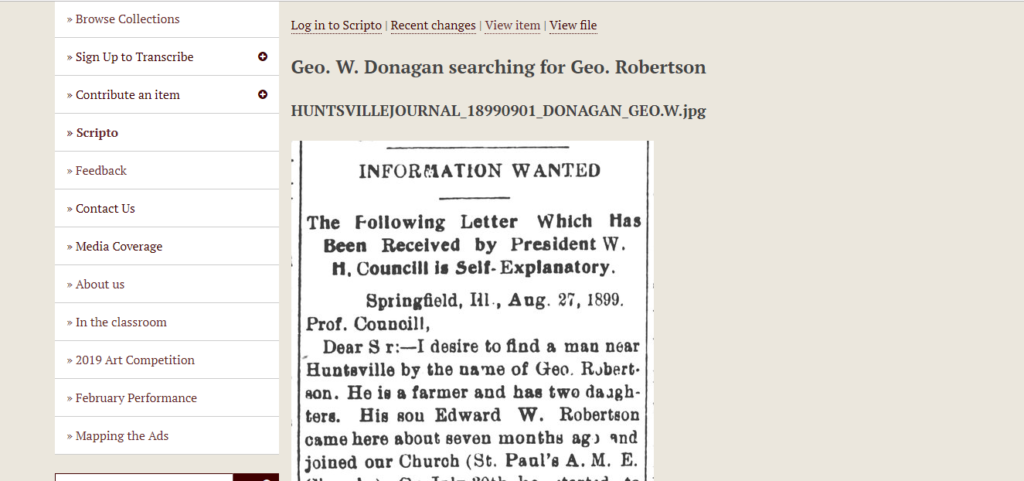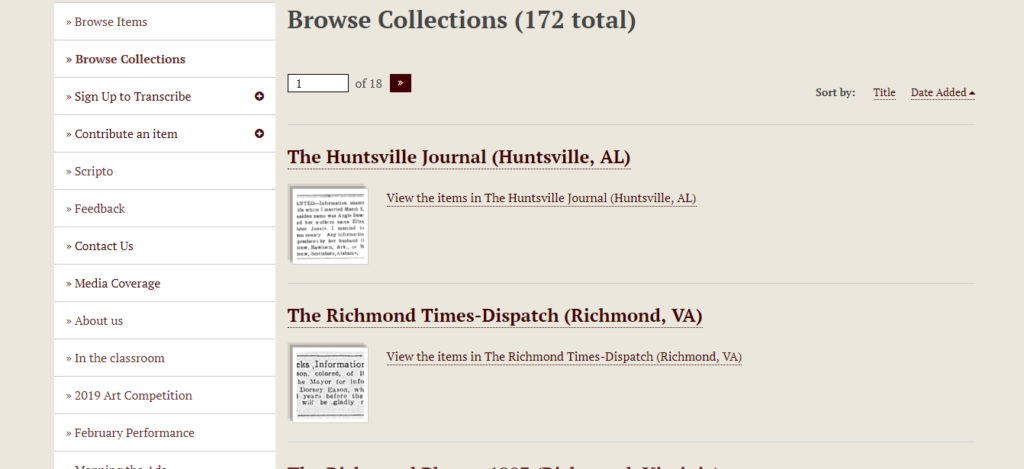Last Seen Review
Last Seen: Finding Family After Slavery.
The argument of Last Seen: Finding Family After Slavery provides genealogists and researchers a new tool to tell family stories of separation and survival during slavery, emancipation, and the Civil War. These ads were also taken out in black newspapers which mentions names, physical description, last seen locations, and the name of
One testimony from visitor Patrick King stated, “as a Black baby boomer who grew up at a time when the US history curriculum taught in elementary and secondary schools was so biased and lacking much factual information about the true horrors and emotional toll of slavery and its aftermath – I am so excited about this site. It gives an unfiltered voice to those who suffered and speaks to the importance and power of love, memory and hope”

According to the About Us page, graduate and undergraduate students find and scan microfilmed newspapers ads. The students clean up the images for
The audience includes genealogists and grade school teachers/students. The project team created lesson plans for teachers, with topics that range from oral histories and deconstructing primary sources. An art project hosted by digital history encourages students to submit to their art competition based on the ads in the project. Another performance piece hosted by project director asks for African American volunteers to read ads as a stage performance. Based on these side projects, the
The website has very basic search functions in Dublin Core. The collection is browsable by newspaper title or tag (term). When an item is selected, there are mutliple ways to download and cite the item, as well as an option to comment on the item. This seems like typical needs of any geneologists; a citation and a download of the item.

The smooth searchablity and search options cannot be duplicated on paper. Most geneolgoists dig through mircofilm and pages of newspapers while this site allows geneolgists to seamlessly search people or places, quickly download the item, and read the transcript. This project is most valuable to African American and black geneologist who have a place to start researching their family history or make connections to family stories.
3 Comments
Maeve Kane
What do you think of the browse/preview interface, with the collections organized by newspaper, and the little word cloud widget on the first page? What about the organization of the browse by tags page?
scarlatte28
I actually like the preview interface in the Browse Collections page. It gives the site some dimension and seeing a preview made me feel like it was possible to find valuable information. When websites do not provide a preview, I’m less inclined to use the site or the information.
SO MANY TAGS! I want to know more about word clouds because this one seems like too many tags, I was overwhelmed. The word clouds I have seen use about 100 words (totally guessing) and utilize color as well as size to show what word/phrase was tagged the most. Most of the tags on this site are locations, which are already on the Mapping the Ads page. The best way to utilize tags for this site would be the topic of the ad either the relation to the person, how they were lost, and when they were lost or when the ad was posted.
There does not seem to be any organization of the tag cloud (again I’m not sure if tag clouds have an organization), and it is not clear who adds the tags. As someone who does not do any genealogical research, I honestly have no clue how people find this information and what genealogists expectations are for sites like Last Seen. However, as someone who browses the internet and uses databases, my expectations are multiple methods of researching with keywords searches, browsing topics, and advanced searches, all of which Last Seen has plus a bunch of tags.
Maeve Kane
Make sure you bring up the tags/word cloud issue in class tomorrow, this is going to connect to something we’re going to do later in the semester!